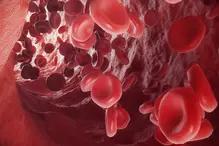New Dose Escalation of CART-ddBCMA Reveal Durable Responses Within R/R Myeloma
Findings from a phase 1 study of CART-ddBCMA cells exemplify their safety and ability to induce durable responses in patients with relapsed or refractory multiple myeloma.

Durable clinical benefit demonstrated in dose escalation cohorts from the ongoing phase 1 study of CART-ddBCMA (NCT04155749) for the treatment of patients with relapsed or refractory multiple myeloma (r/r MM), according to a press release from Arcellx, Inc.1
Investigators found CART-ddBCMA to be safe for in treatment of patients with r/r MM and that CART-ddBCMA produces sturdy responses in patients with poor prognostic features.
"We are honored to have the clinical results of the first 12 patients treated in the dose escalation cohorts with CART-ddBCMA published in a prominent hematologic journal," said Rami Elghandour, Arcellx's chairman and chief executive officer, in the press release. "Given these initial results, we expanded our Phase 1 study at our intended phase 2 pivotal study dose of 100 million cells, and believe these data are indicative of the potential for CART-ddBCMA to be a best-in-class treatment option for patients with multiple myeloma.
CART-ddBCMA is a B cell maturation antigen (BMCA)-specific chimeric antigen receptor (CAR)-modified T-cell therapy which uses the company's BCMA-targeting binding domain for treating patients with r/r MM.
This single-arm, open label phase 1 study sought to evaluate the safety of the BCMA-targeting CAR T construct that leverages a synthetic antigen binding domain, CART-ddBCMA, which was engineered to reduce immunogenicity and improve CAR T-cell surface stability.
Investigators enrolled 13 patients aged 18 years or older with r/r MM who received at least 3 prior regimens of systemic therapy. Patients were administered a single dose of 100 × 106 CART-ddBCMA (DL1) or 300 × 106 CART-ddBCMA (DL2) after completing standard lymphodepleting chemotherapy.
The primary end points of the study included the incidence of treatment emergent adverse events, including dose limiting toxicities, and finding the recommended phase 2 dose (RP2D).
Results revealed that CART-ddBCMA was well tolerated and showed a favorable toxicity profile. One patient receiving DL2 reported acase of grade 3 or worse cytokine release syndrome and immune effector cell-associated neurotoxicity syndrome. These adverse events were both manageable with standard treatment, however.Investigators did not observer any atypical neurological toxicities and Parkinson's disease-like movement disorders.
No maximum tolerated dose was reached, and all infused patients responded to CART-ddBCMA. Nine of 12 patients (75%) patients achieved complete response (CR) or stringent CR. Patient responses deepened over time. At the data cutoff, with a median follow up of 56 weeks, 8 of 9 (89%) evaluable patients achieved minimal residual disease negativity.2
Overall, these findings exemplify the safety of CART-ddBCMA cells and display durable responses to CART-ddBCMA in patients with r/r MM.2
“We look forward to presenting new clinical data at [the American Society for Clinical Oncology] on June 5 and initiating our phase 2 pivotal study for CART-ddBCMA in the second half of this year," added Rami Elghandour, in the press release.
References:
1. Arcellx announces publication in blood advances of clinical results from the dose escalation cohorts of its CART-ddBCMA phase 1 study in patients with relapsed or refractory multiple myeloma. Press release. PRNewswire; May 9, 2022. Accessed May 11, 2022. https://prn.to/3ljkWSV
2. Frigault MJ, Bishop MR, Rosenblatt J, et al. Phase 1 study of CART-ddBCMA for the treatment of subjects with relapsed and refractory multiple myeloma. Published online April 25, 2022. Blood Adv. 2022;bloodadvances.2022007210. doi:10.1182/bloodadvances.2022007210
Gasparetto Explains Rationale for Quadruplet Front Line in Transplant-Ineligible Myeloma
February 22nd 2025In a Community Case Forum in partnership with the North Carolina Oncology Association, Cristina Gasparetto, MD, discussed the CEPHEUS, IMROZ, and BENEFIT trials of treatment for transplant-ineligible newly diagnosed multiple myeloma.
Read More